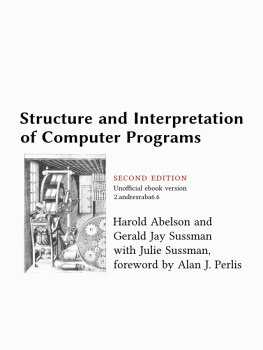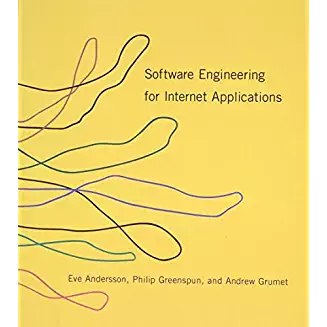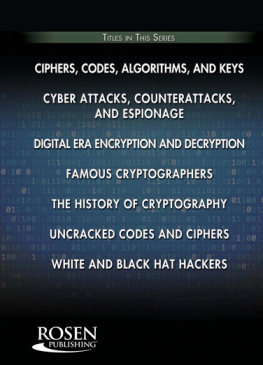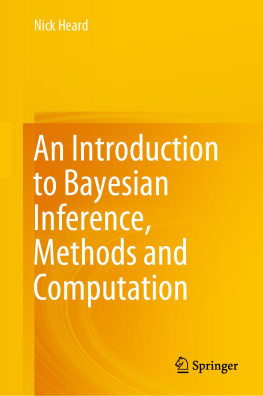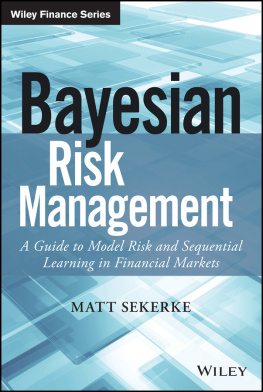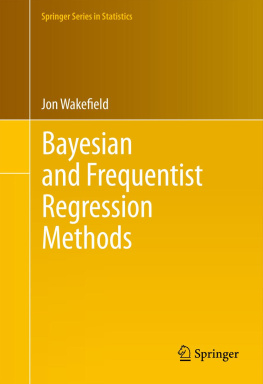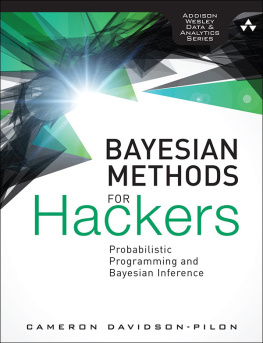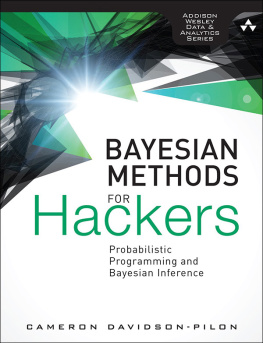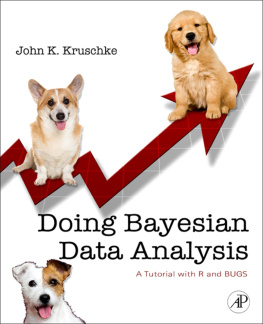it-ebooks - Bayesian Methods for Hackers
Here you can read online it-ebooks - Bayesian Methods for Hackers full text of the book (entire story) in english for free. Download pdf and epub, get meaning, cover and reviews about this ebook. year: 2016, publisher: iBooker it-ebooks, genre: Romance novel. Description of the work, (preface) as well as reviews are available. Best literature library LitArk.com created for fans of good reading and offers a wide selection of genres:
Romance novel
Science fiction
Adventure
Detective
Science
History
Home and family
Prose
Art
Politics
Computer
Non-fiction
Religion
Business
Children
Humor
Choose a favorite category and find really read worthwhile books. Enjoy immersion in the world of imagination, feel the emotions of the characters or learn something new for yourself, make an fascinating discovery.

- Book:Bayesian Methods for Hackers
- Author:
- Publisher:iBooker it-ebooks
- Genre:
- Year:2016
- Rating:5 / 5
- Favourites:Add to favourites
- Your mark:
- 100
- 1
- 2
- 3
- 4
- 5
Bayesian Methods for Hackers: summary, description and annotation
We offer to read an annotation, description, summary or preface (depends on what the author of the book "Bayesian Methods for Hackers" wrote himself). If you haven't found the necessary information about the book — write in the comments, we will try to find it.
Bayesian Methods for Hackers — read online for free the complete book (whole text) full work
Below is the text of the book, divided by pages. System saving the place of the last page read, allows you to conveniently read the book "Bayesian Methods for Hackers" online for free, without having to search again every time where you left off. Put a bookmark, and you can go to the page where you finished reading at any time.
Font size:
Interval:
Bookmark:
https://github.com/CamDavidsonPilon/Probabilistic-Programming-and-Bayesian-Methods-for-Hackers
The Bayesian method is the natural approach to inference, yet it is hidden from readers behind chapters of slow, mathematical analysis. The typical text on Bayesian inference involves two to three chapters on probability theory, then enters what Bayesian inference is. Unfortunately, due to mathematical intractability of most Bayesian models, the reader is only shown simple, artificial examples. This can leave the user with a so-what feeling about Bayesian inference. In fact, this was the author's own prior opinion.
After some recent success of Bayesian methods in machine-learning competitions, I decided to investigate the subject again. Even with my mathematical background, it took me three straight-days of reading examples and trying to put the pieces together to understand the methods. There was simply not enough literature bridging theory to practice. The problem with my misunderstanding was the disconnect between Bayesian mathematics and probabilistic programming. That being said, I suffered then so the reader would not have to now. This book attempts to bridge the gap.
If Bayesian inference is the destination, then mathematical analysis is a particular path to towards it. On the other hand, computing power is cheap enough that we can afford to take an alternate route via probabilistic programming. The latter path is much more useful, as it denies the necessity of mathematical intervention at each step, that is, we remove often-intractable mathematical analysis as a prerequisite to Bayesian inference. Simply put, this latter computational path proceeds via small intermediate jumps from beginning to end, where as the first path proceeds by enormous leaps, often landing far away from our target. Furthermore, without a strong mathematical background, the analysis required by the first path cannot even take place.
Bayesian Methods for Hackers is designed as an introduction to Bayesian inference from a computational/understanding-first, and mathematics-second, point of view. Of course as an introductory book, we can only leave it at that: an introductory book. For the mathematically trained, they may cure the curiosity this text generates with other texts designed with mathematical analysis in mind. For the enthusiast with less mathematical-background, or one who is not interested in the mathematics but simply the practice of Bayesian methods, this text should be sufficient and entertaining.
The choice of PyMC as the probabilistic programming language is two-fold. As of this writing, there is currently no central resource for examples and explanations in the PyMC universe. The official documentation assumes prior knowledge of Bayesian inference and probabilistic programming. We hope this book encourages users at every level to look at PyMC. Secondly, with recent core developments and popularity of the scientific stack in Python, PyMC is likely to become a core component soon enough.
PyMC does have dependencies to run, namely NumPy and (optionally) SciPy. To not limit the user, the examples in this book will rely only on PyMC, NumPy, SciPy and Matplotlib only.
Bayesian Methods for Hackers is now available as a printed book! You can pick up a copy on Amazon. What are the differences between the online version and the printed version?
- Additional Chapter on Bayesian A/B testing
- Updated examples
- Answers to the end of chapter questions
- Additional explaination, and rewritten sections to aid the reader.
See the project homepage here for examples, too.
The below chapters are rendered via the nbviewer atnbviewer.ipython.org/, and is read-only and rendered in real-time.Interactive notebooks + examples can be downloaded by cloning!
Prologue: Why we do it.
Chapter 1: Introduction to Bayesian MethodsIntroduction to the philosophy and practice of Bayesian methods and answering the question, "What is probabilistic programming?" Examples include:
- Inferring human behaviour changes from text message rates
Chapter 2: A little more on PyMCWe explore modeling Bayesian problems using Python's PyMC library through examples. How do we create Bayesian models? Examples include:
- Detecting the frequency of cheating students, while avoiding liars
- Calculating probabilities of the Challenger space-shuttle disaster
Chapter 3: Opening the Black Box of MCMCWe discuss how MCMC operates and diagnostic tools. Examples include:
- Bayesian clustering with mixture models
Chapter 4: The Greatest Theorem Never ToldWe explore an incredibly useful, and dangerous, theorem: The Law of Large Numbers. Examples include:
- Exploring a Kaggle dataset and the pitfalls of naive analysis
- How to sort Reddit comments from best to worst (not as easy as you think)
Chapter 5: Would you rather lose an arm or a leg?The introduction of loss functions and their (awesome) use in Bayesian methods. Examples include:
- Solving the Price is Right's Showdown
- Optimizing financial predictions
- Winning solution to the Kaggle Dark World's competition
Chapter 6: Getting our prior-ities straightProbably the most important chapter. We draw on expert opinions to answer questions. Examples include:
- Multi-Armed Bandits and the Bayesian Bandit solution.
- What is the relationship between data sample size and prior?
- Estimating financial unknowns using expert priors
We explore useful tips to be objective in analysis as well as common pitfalls of priors.
Chapter X1: Bayesian methods in Machine Learning and Model ValidationWe explore how to resolve the overfitting problem plus popular ML methods. Also included are probablistic explainations of ridge regression and LASSO regression.
- Tim Saliman's winning solution to Kaggle's Don't Overfit problem
Chapter X2: More PyMC HackeryWe explore the gritty details of PyMC. Examples include:
- Analysis on real-time GitHub repo stars and forks.
More questions about PyMC?Please post your modeling, convergence, or any other PyMC question on cross-validated, the statistics stack-exchange.
The book can be read in three different ways, starting from most recommended to least recommended:
- The most recommended option is to clone the repository to download the .ipynb files to your local machine. If you have IPython installed, you can view thechapters in your browser plus edit and run the code provided (and try some practice questions). This is the preferred option to readthis book, though it comes with some dependencies.
- IPython v0.13 (or greater) is a requirement to view the ipynb files. It can be downloaded here. IPython notebooks can be run by
(your-virtualenv) ~/path/to/the/book/Chapter1_Introduction $ ipython notebook - For Linux users, you should not have a problem installing NumPy, SciPy, Matplotlib and PyMC. For Windows users, check out pre-compiled versions if you have difficulty.
- In the styles/ directory are a number of files (.matplotlirc) that used to make things pretty. These are not only designed for the book, but they offer many improvements over the default settings of matplotlib.
- IPython v0.13 (or greater) is a requirement to view the ipynb files. It can be downloaded here. IPython notebooks can be run by
Font size:
Interval:
Bookmark:
Similar books «Bayesian Methods for Hackers»
Look at similar books to Bayesian Methods for Hackers. We have selected literature similar in name and meaning in the hope of providing readers with more options to find new, interesting, not yet read works.
Discussion, reviews of the book Bayesian Methods for Hackers and just readers' own opinions. Leave your comments, write what you think about the work, its meaning or the main characters. Specify what exactly you liked and what you didn't like, and why you think so.


